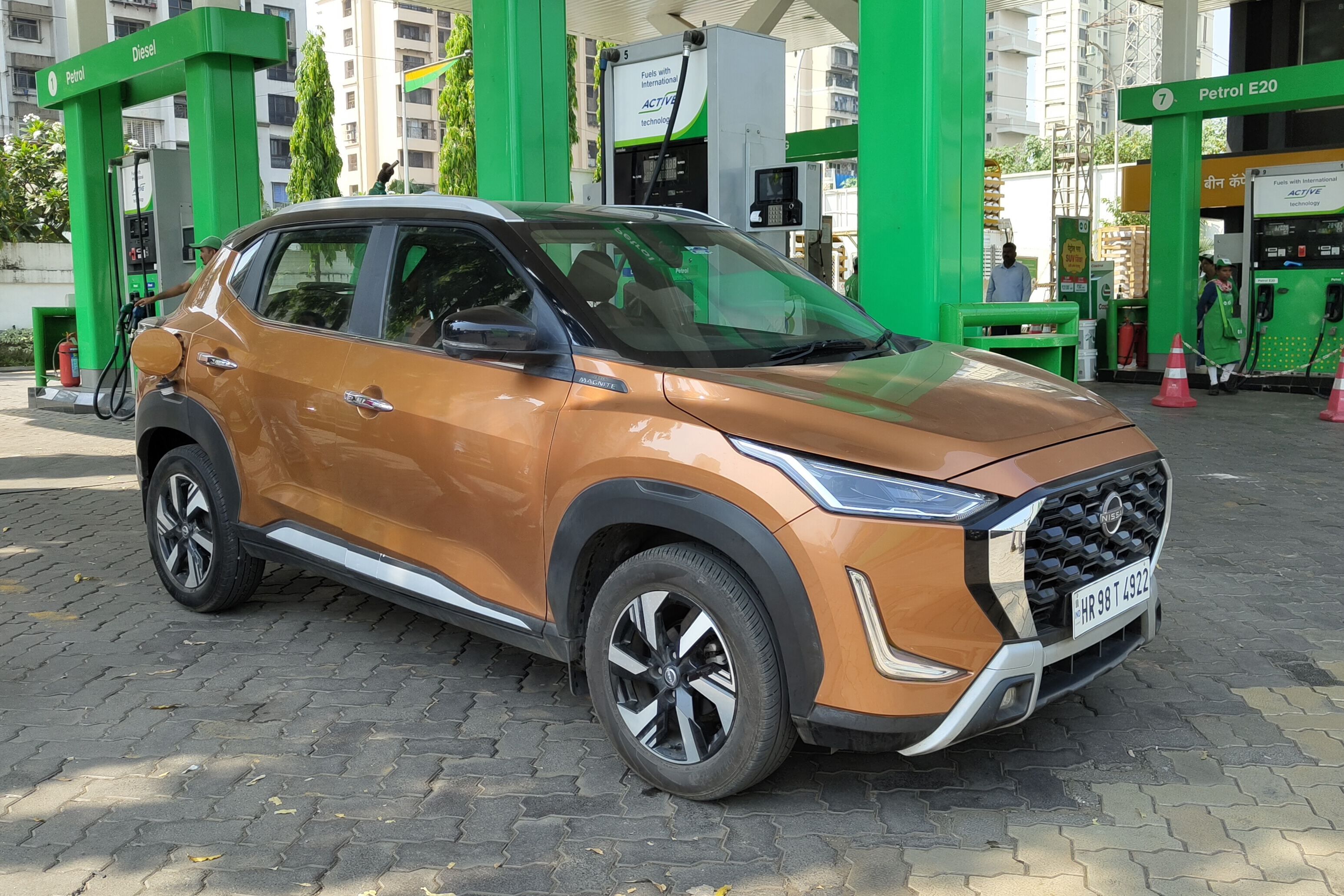
Nissan updated the Magnite compact SUV last year with a tweaked design, refreshed interiors and more features. However, it remains mechanically identical with two engine options – a 72hp, 1.0-litre naturally aspirated petrol and a 100hp, 1.0-litre turbo-petrol. We’ve now tested the latter paired with a CVT automatic to see just how fuel efficient it is in the real-world. Do note, the 1.0-litre turbo petrol engine has been E20-compliant since August 2024.
- Magnite Turbo CVT has a claimed mileage of 17.9kpl
- Magnite CVT has a kerb weight of 1,103kg
- Compact SUV doesn’t feature auto start/stop
Nissan Magnite CVT real world mileage

The Nissan Magnite we tested was powered by a 100hp, 1.0-litre turbo-petrol engine mated to a CVT. Nissan claims an ARAI-certified mileage of 17.9kpl for this version. In our real-world fuel efficiency tests, the Magnite CVT returned 9.5kpl in the city and 15.22kpl out on the highway.
Despite not featuring fuel-saving auto start/stop tech and ambient temperatures ranging between 35-40deg C, the Nissan Magnite CVT returned respectable figures. The Magnite Turbo CVT’s relatively light kerb weight of 1,103kg does help contribute to the efficiency.
The Magnite’s CVT automatic has been tuned for drivability, so it keeps the engine spinning optimally and feels very responsive; as a result, it isn’t quite frugal. Still, for this CVT’s sheer convenience and smoothness, its real-world fuel efficiency doesn’t come across as a huge compromise.
Autocar India’s fuel efficiency testing
Before our real-world fuel efficiency tests, we fill our test cars’ tanks to the brim and maintain tyre pressures based on the manufacturer’s recommendation. These cars are driven in fixed city and highway loops in and around Navi Mumbai, and we maintain certain average speeds. Throughout the tests, there is only one person in each car, running the aircon and other electricals, such as the audio system, indicators and wipers, when required, just like a regular user would. Periodic driver swaps further neutralise variations in driver patterns. At the end of each cycle, we calculate efficiency by filling the tanks to full again.

